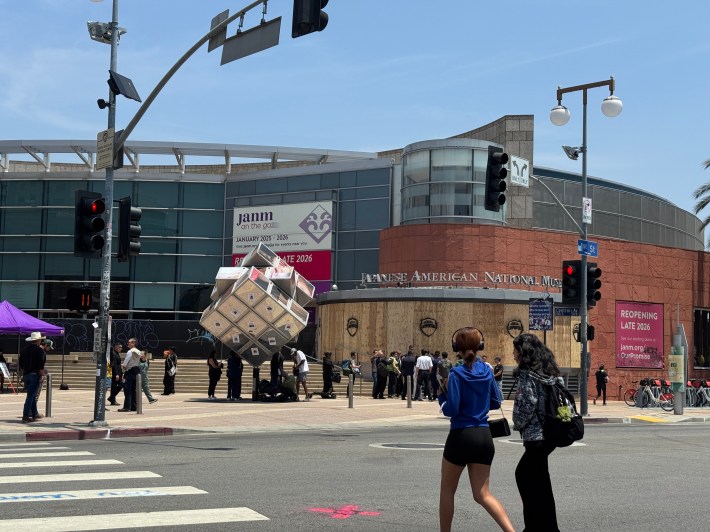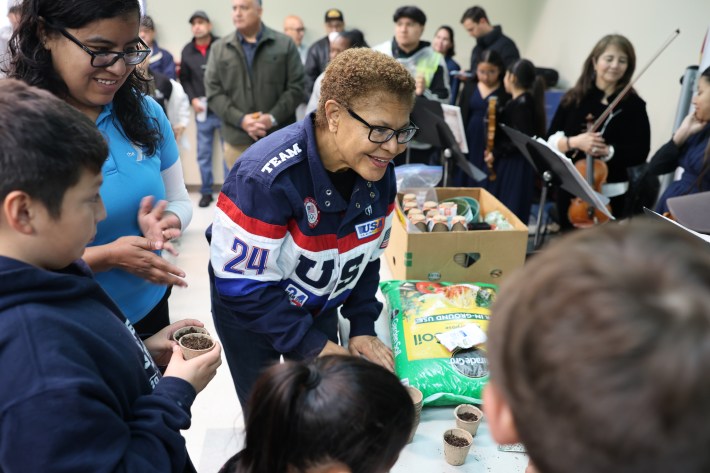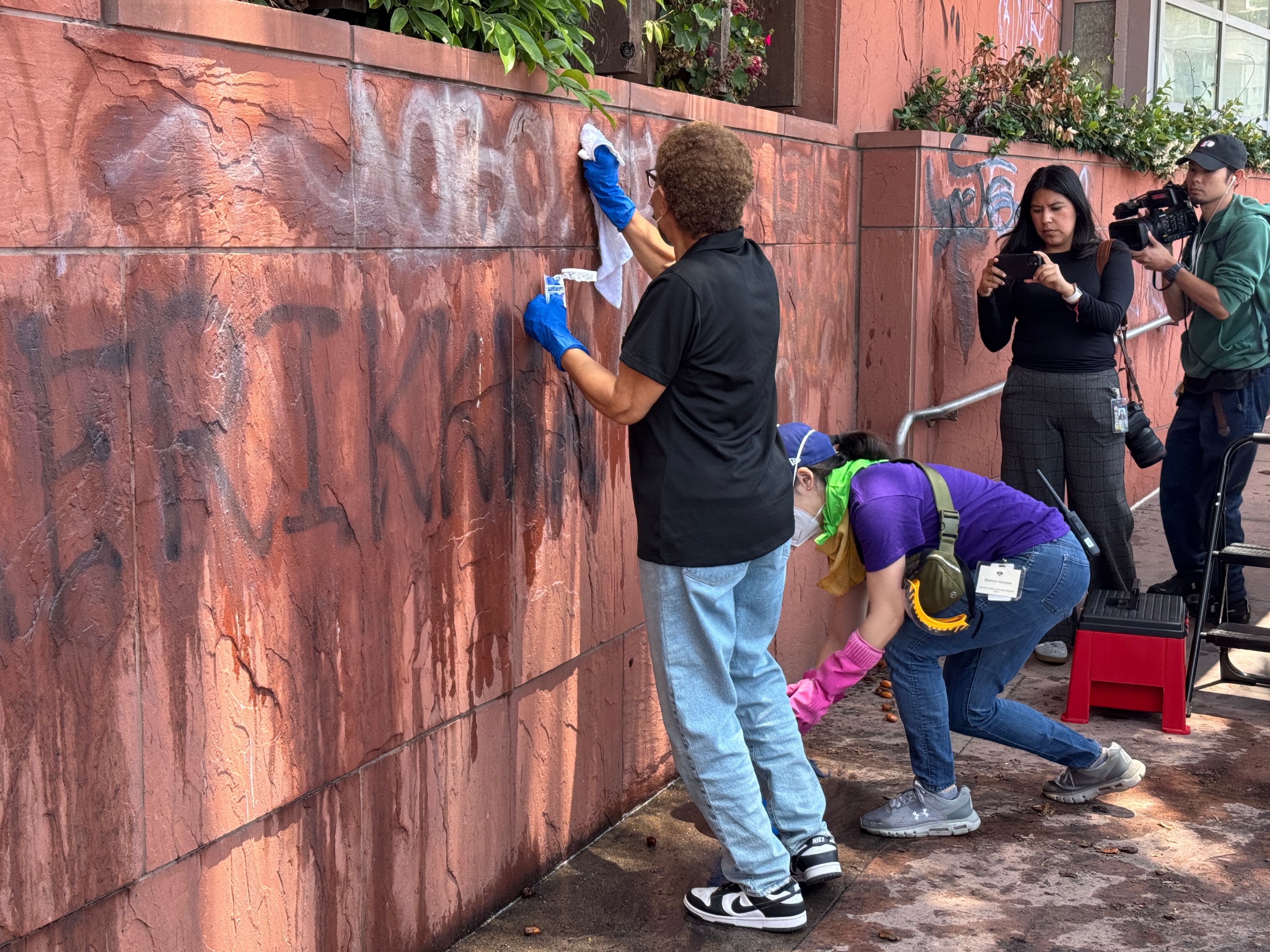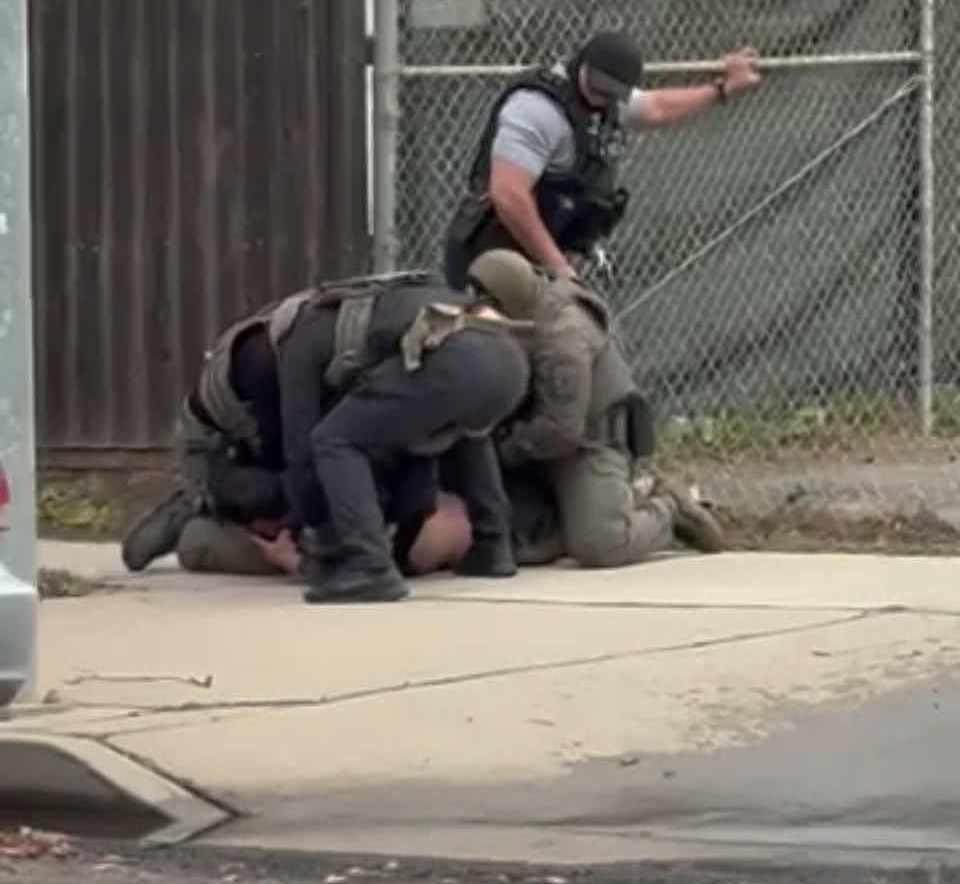On a mild afternoon in mid-June, Mayor Karen Bass posed for photos in Little Tokyo with a rag in her hand.
Little Tokyo Sparkle, which started in 2016, is a community-organized cleanup event held annually to help beautify the neighborhood. Even though hundreds of volunteers had just participated in the last cleanup less than a month prior, more than 150 volunteers showed up again for an “emergency Sparkle” to scrub graffiti off of local businesses.
In the aftermath of ongoing protests against ICE, and the ensuing and forceful response of LAPD, Little Tokyo businesses were hit hard with graffiti, in addition to damage from fireworks, smoke bombs, and flash bangs.
Cultural landmarks, including the Japanese American National Museum (JANM) and Little Tokyo Towers, which provide affordable housing to seniors, were also damaged by vandalism.

I had originally planned to cover just the cleanup itself and interview volunteers and local business owners. But after doing a lap around the block to get photo and video coverage, a former colleague came up to me and said, “Mayor Bass is here doing a photo-op.”
The mayor did interviews with press, spoke with event organizers, and posed for photos, briefly scrubbing at graffiti on the side of the JANM building with gloves and a rag.
When L.A. TACO published a video of Mayor Bass participating in the cleanup, the vast majority of comments we received were critical of what they saw as a calculated PR move.
One comment, which received more than 4,000 likes, said, “This is 100% for optics. She was there for a photo op I’m sure.”
Another commenter said, “Why the f-ck is she removing graffiti instead of kicking out ICE?” (Notably, we also received dozens of comments on the video critiquing Mayor Bass’s ineffective cleaning technique.)
Over the last several years, the power of community organizing has become self-evident.
In the early months of the year, we saw dozens of volunteer organizations unite to help those affected by devastating fires. At the height of the COVID-19 pandemic, organizers and volunteers came together to distribute PPE and help vaccination efforts.
I’ve witnessed the strength of the Los Angeles community firsthand, and I believe in the power of neighbors coming together to help struggling business owners — especially long-term Little Tokyo residents who have already been hard hit by gentrification and skyrocketing costs of living.

But when I interviewed Mayor Bass at the cleanup, I found her response somewhat lacking. Bass told L.A. TACO:
“I’m here today because of the vandalism that took place at [JANM]. To me, this is one of the iconic institutions in our city, and to deface businesses or iconic museums like this … This doesn’t represent the fight for immigrant rights. Anybody that did this to this museum is — to me — not in support of immigrant rights.” (Mayor Bass’ full statement can be viewed here.)
As I walked down 1st Street, the political sentiment of most of the graffiti I documented was clear. “F-ck ICE” was the resounding message spray painted repeatedly over sidewalks and buildings.

Some tags changed the wording slightly, with phrases such as “ICE SUCK MY D-CK” and “F-CK ICE Y’ALL EAT ASS,” but the sentiment remained the same. Maybe I’ve become desensitized to graffiti after living in Koreatown, but the anti-ICE slogans seemed preferable to the tags promoting violent gangs that cover nearly all of the businesses in my neighborhood.
When I asked JANM’s board chair, Bill Fujioka, how he felt about the graffiti in Little Tokyo, he said, “The damage to our museum broke my heart. A friend of mine sent me a video and then I came down to see it myself. It’s difficult because it’s our museum. You’ve been to the museum — it’s holy ground for us.”
Then Fujioka told me about the history of Japanese Americans who were incarcerated for four years in internment camps. As a fellow Japanese American, the history of Japanese immigrants that JANM aims to preserve is near to my heart. When I last visited JANM for a different story, it was impossible not to get emotional when a staff member showed me a scale model of the Manzanar camp only a few hours away from Los Angeles.
“We feel because of what happened in 1942 — because of the absolute parallel between that time and what’s happening now,” Fujioka continued, “we need to speak up.”
Though he expressed frustration over protesters tagging the JANM building and nearby businesses, he was still in full support of the protests against ICE raids.
“If it results in a little disruption to our community, I understand that,” Fujioka said. “We understand that.”
“[There] is damage right now. I won’t underscore that. But the overall greater goal — speaking out against the injustice to the immigrant community — is important.”
As ICE’s raids on the Los Angeles community continue, so do Mayor Bass’ harsh words against protesters who use graffiti to make a political statement.
On Tuesday, the mayor announced a cleanup event on Instagram, saying, “Like many Angelenos, I’m outraged and appalled by bad actors who have vandalized and harmed our Downtown L.A. neighborhood. That’s why we are coming together this weekend to beautify and restore DTLA.”
The cleanup is part of Shine LA, a citywide initiative led by Mayor Bass in preparation for the 2028 Olympics. Though I’m skeptical about an initiative aimed at “beautifying” the city for a controversial and costly sporting event, I hope it helps struggling local businesses that were damaged during the protests.
After weeks of brutal ICE raids that have torn apart local immigrant communities, Angelenos have no doubt felt waves of fear, anger, and devastation. Mayor Bass has been outspoken against the raids and the Trump administration’s overreach, but that hasn’t stopped her from unleashing LAPD on the city. LAPD has teargassed peaceful protesters, shot “less lethal” rounds at on-air reporters, and trampled multiple people on horseback.
Still, I’m struck by the image of the mayor of Los Angeles ineffectively scrubbing at anti-government protest graffiti.







